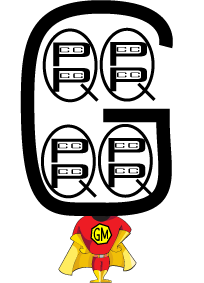Did you answer Tuesday night's Final Jeopardy problem correctly? If not, you are not alone. Colin, who had a considerable lead during much of the show, lost by a narrow margin when he answered it incorrectly. If you didn't see it, give it a try now:
THIS 2-DIGIT NUMBER IS THE SMALLEST PRIME NUMBER WHOSE DIGITS ARE BOTH THEMSELVES PRIME NUMBERS
Alright, what have you got? Scroll down to see if you got the correct solution. If you think you need a little refresher on prime numbers first, use the following resources for review/practice.
A PRIME NUMBER is one that has exactly two factors, 1 and itself. The first few prime numbers are 2(the only even prime), 3, 5, 7, 11...
If we are talking about prime numbers, we should discuss composite numbers as well. A COMPOSITE NUMBER is one that is not prime; it can be divided evenly by numbers other than 1 and itself. The first few prime numbers are 4, 6, 8, 9, 10...
***SPECIAL CASE: the number 1 is neither prime nor composite***
For more information on prime and composite numbers, check out this information from Maths Is Fun. There is a quiz at the bottom of the page that you might find helpful for some extra practice. If prime numbers interest you, here are some advanced concepts related to primes.
Another great resource for more challenging problems related to this concept is the website for the Intermediate Math League of Eastern Massachusetts (IMLEM). Check out the "Categories/Topics" section to see which topics are covered in each category for every meet. Then look through "Old Competitions" for PDF's of meet questions, along with answers and explanations.
Here are some fun prime/composite questions from past IMLEM competitions:
- What is the sum of all the prime numbers between 40 and 60 ? (Category 3, Number Theory, Meet #1 - October, 2014)
- Two of the four prime factors of 17,017 are 13 and 17. What is the larger of the other two prime factors ? (Category 3, Number Theory, Meet #1 - October, 2013)
- Two prime numbers p and q have a sum of 38. Given that p > q, find the value of p – q. (Category 3, Number Theory, Meet #1 - October, 2012)
- Thinking of the natural numbers from 2 to (and including) 20, what is the positive difference between the sum of all composites and the sum of all primes? (Category 3, Number Theory, Meet #1 - October, 2010)
**************************************************************************************************************
Final Jeopardy Answer: THIS 2-DIGIT NUMBER IS THE SMALLEST PRIME NUMBER WHOSE DIGITS ARE BOTH THEMSELVES PRIME NUMBERS
Final Jeopardy Question: What is 23?
Explanation and strategy: Considering the problem and what we know about prime numbers, a systematic way to approach a solution would be to consider each two-digit number starting at 10 to determine whether it meets the necessary conditions. A common error regarding primes (and the one Colin made) is considering 1 a prime number - this is why Colin (and the winning contestant first wrote this, then scratched it out and wrote the correct answer) gave the answer of 11. Since we know 1 is not a prime number, we can skip to 20 and consider whether 20 and the numbers that follow have more factors than just one and itself. You will quickly arrive at 23, notice it is prime, and that 2 and 3 are also prime.
**************************************************************************************************************
Age/Grade Guidelines:
In Massachusetts, the Common Core State Standards have been adopted. Work with factors (and multiples), primes and composites is part of the fourth grade standards. (Find all factor pairs for a whole number in the range 1-100. Recognize that a whole number is a multiple of each of its factors. Determine whether a given whole number in the range 1-100 is a multiple of a given one-digit number. Determine whether a given whole number in the range 1-100 is prime or composite.) - CCSS.MATH.CONTENT.4.OA.B.4






























